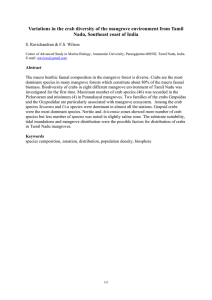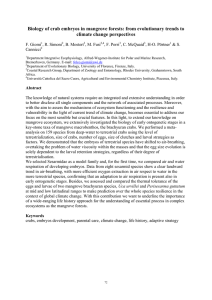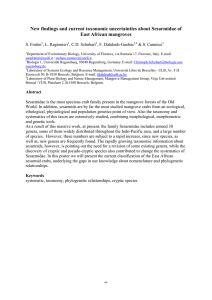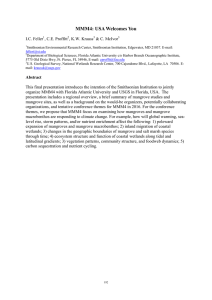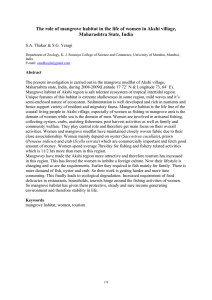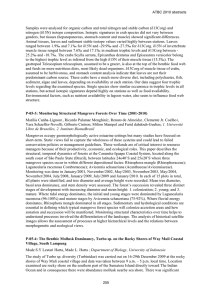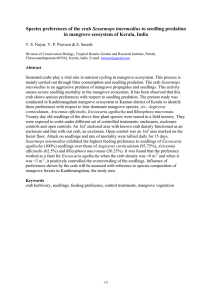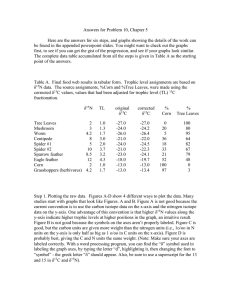Does ‘you are what they eat’ apply to mangrove Sesarmid... S.Y. Lee
advertisement
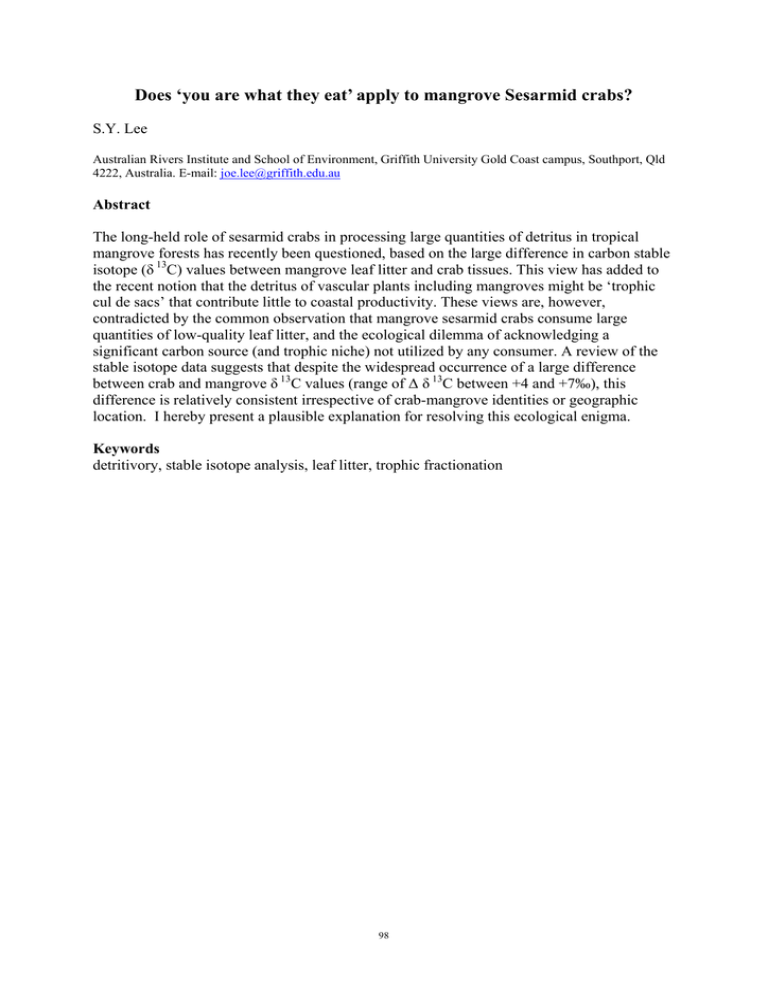
Does ‘you are what they eat’ apply to mangrove Sesarmid crabs? S.Y. Lee Australian Rivers Institute and School of Environment, Griffith University Gold Coast campus, Southport, Qld 4222, Australia. E-mail: joe.lee@griffith.edu.au Abstract The long-held role of sesarmid crabs in processing large quantities of detritus in tropical mangrove forests has recently been questioned, based on the large difference in carbon stable isotope (δ 13C) values between mangrove leaf litter and crab tissues. This view has added to the recent notion that the detritus of vascular plants including mangroves might be ‘trophic cul de sacs’ that contribute little to coastal productivity. These views are, however, contradicted by the common observation that mangrove sesarmid crabs consume large quantities of low-quality leaf litter, and the ecological dilemma of acknowledging a significant carbon source (and trophic niche) not utilized by any consumer. A review of the stable isotope data suggests that despite the widespread occurrence of a large difference between crab and mangrove δ 13C values (range of Δ δ 13C between +4 and +7‰), this difference is relatively consistent irrespective of crab-mangrove identities or geographic location. I hereby present a plausible explanation for resolving this ecological enigma. Keywords detritivory, stable isotope analysis, leaf litter, trophic fractionation 98
